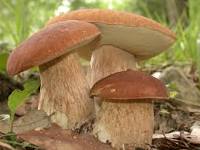Stamp: Kuehneromyces mutabilis (Abkhazia 1996)
Kuehneromyces mutabilis (Abkhazia 1996)
05 May (Abkhazia ) within release Mushrooms goes into circulation Stamp Kuehneromyces mutabilis face value 600 Russian ruble
| Stamp Kuehneromyces mutabilis in catalogues | |
|---|---|
| Michel: | Mi: AB 97B |
Stamp is vertical format.
Issued in sheets of 16 stamps (4 blocks of four). Stamp number in Catalog of Republic of Abkhazia: 104 Kuehneromyces mutabilis, also known as the sheathed woodtuft, is a species of mushroom in the family Strophariaceae. It is found in Europe, Asia, and North America, growing on decaying wood, often in clusters. It is characterized by its sheathed stem, which is covered by a thin membrane that can be easily removed. The cap is initially convex and later becomes flattened, with a diameter of up to 10 cm. The gills are adnate, and initially whitish before turning pink and eventually dark brown as the mushroom ages. Kuehneromyces mutabilis is edible and considered a choice edible by some, but it is not widely consumed.Also in the issue Mushrooms:
- Souvenir Sheet - Clavaria argillacea face value 600;
- Souvenir Sheet - Otidea onotica face value 1,500;
- Stamp - Clavaria argillacea face value 600;
- Stamp - Kuehneromyces mutabilis face value 600;
- Stamp - Morchella conica face value 600;
- Se-tenant - Mushrooms face value 4*600;
- Se-tenant - Mushrooms face value 4*600;
- Se-tenant - Mushrooms face value 4*1500;
- Se-tenant - Mushrooms face value 4*1500;
- Full Pane - Mushrooms face value 16*600;
- Full Pane - Mushrooms face value 16*1500;
- Stamp - Otidea onotica face value 1,500;
- Stamp - Ramaria aurea face value 600;
- Stamp - Sparassis crispa face value 1,500;
- Stamp - Stropharia aeruginosa face value 1,500;
- Stamp - Xerocomus chrysenteron face value 1,500;
Stamp Kuehneromyces mutabilis it reflects the thematic directions:
A mushroom (or toadstool) is the fleshy, spore-bearing fruiting body of a fungus, typically produced above ground on soil or on its food source. The standard for the name "mushroom" is the cultivated white button mushroom, Agaricus bisporus; hence the word "mushroom" is most often applied to those fungi (Basidiomycota, Agaricomycetes) that have a stem (stipe), a cap (pileus), and gills (lamellae, sing. lamella) on the underside of the cap. These gills produce microscopic spores that help the fungus spread across the ground or its occupant surface. "Mushroom" describes a variety of gilled fungi, with or without stems, and the term is used even more generally, to describe both the fleshy fruiting bodies of some Ascomycota and the woody or leathery fruiting bodies of some Basidiomycota, depending upon the context of the word. Forms deviating from the standard morphology usually have more specific names, such as "bolete", "puffball", "stinkhorn", and "morel", and gilled mushrooms themselves are often called "agarics" in reference to their similarity to Agaricus or their order Agaricales. By extension, the term "mushroom" can also designate the entire fungus when in culture; the thallus (called a mycelium) of species forming the fruiting bodies called mushrooms; or the species itself.

